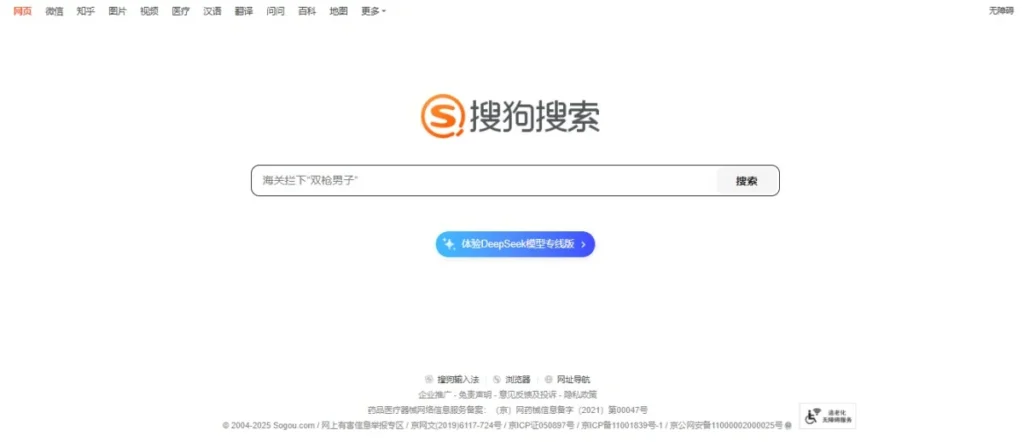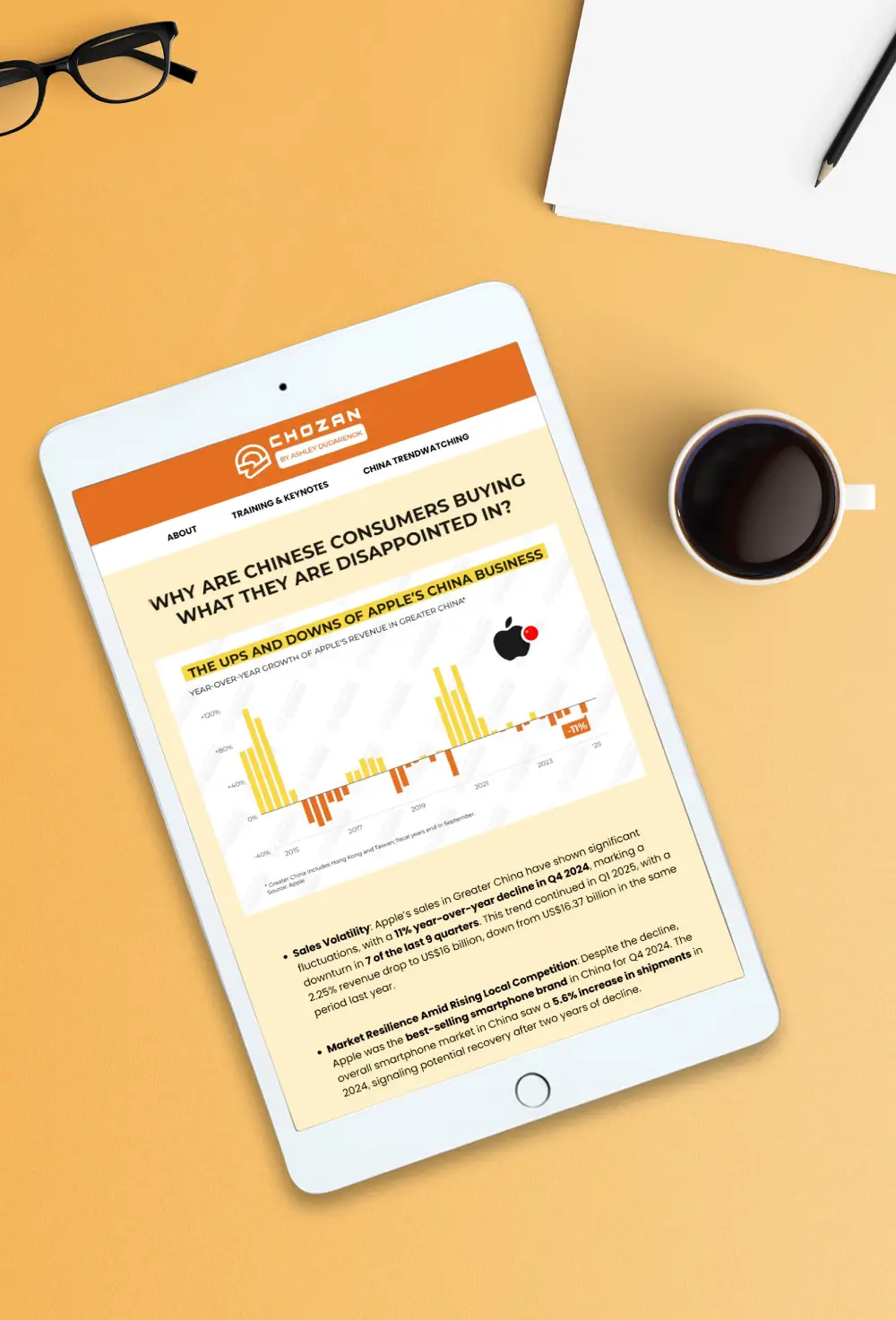CONTENT

By: Ashley Dudarenok
Updated:
Succeeding in China takes more than a well-known brand or a global strategy. Companies often struggle when they fail to connect with local habits, preferences, and expectations. Many overlook a simple but powerful question: What is market research?
Without answering this correctly, brands miss the insights that drive real engagement. Amazon closed its marketplace in China after 15 years of effort. Other major names, such as Walmart, Best Buy, Airbnb, and Burberry, also faced significant challenges.
These failures often stem from weak localization and poor market research. Global leaders can fall short if they fail to understand how people shop, what builds trust, or what services they expect.
In China, market research goes beyond basic surveys. It requires asking the right questions, using local tools, and understanding regional behaviors and digital habits.
This guide walks you through the entire process—how to ask the right questions, utilize Chinese survey tools, track trends on platforms like Baidu and Douyin, and respond to culture-specific buying patterns.

Market research is the structured process of collecting and analyzing data about a target market. It helps businesses understand what customers want, how they behave, and what influences their decisions. The ultimate goal is to eliminate guesswork, ensuring that product development, pricing, messaging, and distribution are based on insight, not assumption.
At its core, market research answers questions like:
Conducted well, market research enhances the likelihood of achieving product-market fit. It reveals unmet needs, validates demand, and uncovers friction points before resources are wasted on ineffective ideas.
All market research falls into two major categories based on how the data is collected: primary and secondary.
Primary research involves direct interaction with your target audience. It provides you with original, firsthand insight.
Examples include:
Because you control the questions and the sample, primary research offers more control and specificity. It’s especially valuable when testing new ideas, exploring niche groups, or validating product concepts.
Secondary research utilizes existing information. It’s typically faster and more cost-efficient than collecting original data.
Sources may include:
Secondary research is ideal for understanding the broader landscape, including market size, industry trends, and competitor positioning. However, it may not fully answer business-specific questions without customization.
Both primary and secondary research can be qualitative or quantitative, depending on how they are conducted and the data they produce.
This approach utilizes structured tools, such as polls or numerical surveys, to gather measurable data. It answers “how much,” “how often,” or “how many.”
For example:
Quantitative methods are ideal for trend tracking, forecasting, and performance analysis.
Qualitative research focuses on context, emotion, and interpretation. It explores the “why” behind decisions—what people think, feel, or believe.
Common methods:
It’s often used in early-stage product development or branding exercises, where emotional tone and perception matter more than numbers.
Smart teams rarely rely on just one type of research. They combine quantitative scale with qualitative depth to understand both what people do and why they do it.
For example:
By layering these approaches, businesses gain a more comprehensive, nuanced picture—and can act with confidence.
Market research in China follows the same principles as elsewhere, but it must also account for China’s unique environment, including its digital ecosystem, cultural nuances, and regional diversity.
Choosing the correct research method depends on your goals and the speed at which insight is needed. Understanding these factors means moving beyond surface observations and into real behavioral insight.
Primary research is your direct line to authentic consumer voices in China. When done right, it goes beyond numbers to uncover motivations, behaviors, and perceptions that drive decisions in this multifaceted market.
Here’s how to execute it effectively:
Given China’s high internet and smartphone penetration, online surveys are a dominant method for primary research. Platforms like Wenjuanxing and Tencent Questionnaire (腾讯问卷) are widely used for designing and disseminating questionnaires.
Researchers can target respondents through QR codes, WeChat posts, or text messages, making it easy to reach large samples across different cities.
Surveys may be conducted in Chinese and require careful translation/localization. Wording must account for Chinese phrasing and context to avoid confusion. It’s common to offer small incentives (like mobile top-up credits or e-coupons) to encourage participation.
Many companies arrange focus groups in major Chinese cities to get qualitative feedback. For example, a food company might invite 8-10 consumers in Shanghai to taste a new snack and discuss their impressions.
Consumers are often familiar with the format in tier-1 cities, such as Beijing, Shanghai, Guangzhou, and Shenzhen. In lower-tier cities, moderation styles may need to be adjusted to encourage open responses.
Street interviews in malls—especially in cities like Chengdu or Wuhan—help capture insights from a broader range of consumers.
When market research requires more than consumer opinion—when it’s about understanding how industries actually work—expert interviews become essential.
These one-on-one conversations go deep into the dynamics shaping a category:
Experts may include former competitors’ employees, current players in the space, regional distributors, or analysts tracking the vertical. For example, suppose a client wants to understand a new retail brand’s backend strategy. In that case, interviews might be conducted with former staff or operational partners familiar with its tech stack and growth model.
In sectors where public data is limited or unreliable—such as health tech, fintech, or B2B SaaS—these interviews often reveal what dashboards and surveys overlook entirely.
Looking to go deeper than surface metrics? ChoZan regularly conducts expert interviews as part of custom China research—connecting you with the voices that matter most to your strategy.
Engage local moderators or agencies. They manage dialect nuances, moderate group dynamics, conduct in‑person interviews, and ensure cultural appropriateness. Field oversight—including recording, transcription, and translation checks—is essential for qualitative accuracy.
China’s market moves fast. Turn survey insights around in under two weeks—real‑time dashboard access is common. Qualitative summaries should be translated and delivered within 48 hours of the interviews. This rapid cadence allows agile adjustments to product design, go‑to‑market strategies, and campaign language.
Secondary data is a treasure trove for understanding China’s market context, but finding and interpreting it requires local know-how:
Government and Public Data
The Chinese government publishes a vast amount of data. China’s National Bureau of Statistics (NBSC) provides key data on consumer spending, income, retail growth, and demographics useful for market sizing and trend analysis.
Ministries also publish white papers on specific industries like semiconductors or e-commerce. Most reports are written in Chinese, so local language skills are essential for accessing and interpreting them accurately.
The Chinese data ecosystem is siloed. One source won’t give you a complete picture. Break your research into targeted domains:
Then, map which sources best cover each area. Think triangulation, not dependency.
Universities and think tanks in China frequently conduct consumer surveys or economic studies, which are often published in journals (in Chinese). Moreover, multinational firms (banks, Big 4 consultancies) sometimes release consumer surveys – for example, an annual study of Chinese consumer sentiment or an analysis of luxury spending. These sources can add depth.
Media outlets like Jing Daily or Technode compile data and expert opinions on market developments, providing a lighter form of secondary research to stay up-to-date with trends.
In the Chinese market, consumer truth is often revealed in behavior, rather than what people say. For example:
Track micro-signals, such as resale activity, influencer collaborations, livestream frequency, and trending hashtags. These often reveal emerging preferences weeks before mainstream media reports them.
One of the distinctive aspects of doing market research in China is the digital-first, mobile-first nature of Chinese consumers. This has led to innovative data collection methods that leverage technology:
In China, the real story isn’t about mobile access—it’s about how people use their devices. Consumers don’t fill out forms—they swipe, tap, scroll, and use voice search. This radically reshapes how data should be collected.
For example, surveys seamlessly integrated into users’ everyday digital experiences tend to achieve significantly higher completion rates than those delivered through traditional channels, such as email or standalone apps. Users are more likely to respond when surveys feel native to their browsing flow, without requiring redirection or additional login steps.
Design also plays a role. Mobile interaction tracking reveals that even the placement of CTA buttons significantly impacts completion rates.
An emerging trend is the use of AI chatbots to engage consumers in more conversational surveys. Instead of a static form, a chatbot asks questions individually, possibly adapting based on previous answers. This can feel more like a friendly interview and less like a formal survey, which can increase engagement.
Some Chinese startups are developing AI survey bots that can understand open-ended text responses in Mandarin and categorize sentiment, making qualitative data easier to quantify at scale.
Chinese companies utilize heatmaps and A/B testing to monitor user behavior on their apps and websites. For example, testing different “Buy Now” button colors helps identify what drives conversions. These tools reveal where users tap or scroll, guiding UI/UX decisions. Offline, video analytics track in-store movement, offering similar behavioral insights within privacy guidelines.
Using visual heatmaps, brands can see which parts of a mobile app or Mini-Program attract attention and where users tend to drop off. Combining this with post-session micro-polls creates a hybrid model that integrates behavioral and declarative data in real-time.
While digital data is plentiful, companies must abide by China’s privacy regulations. Generally, aggregated and anonymized data can be used; however, collecting personal identifiable information requires consent under laws such as the Personal Information Protection Law (PIPL).
Thus, digital market research platforms in China typically include explicit opt-ins and data handling practices to ensure compliance.

China’s consumer market brings new platforms, behavior shifts, and regional changes that can make or break a product.
Global brands often assume that experience in the U.S. or Europe gives them a blueprint for success in China. However, misreading local context, skipping cultural insights, or moving too quickly with the wrong positioning has sunk some of the world’s biggest names.
In China, the pace of trend evolution is measured in weeks, not quarters. Platforms like Douyin, RedNote, and Kuaishou move fast—what’s hot today is forgotten in 10 days.
Unlike markets where trends build over quarters, China’s consumer interest is shaped by fast-moving micro-moments—such as short videos, viral challenges, or livestream flash sales. This compressed cycle makes pre-launch research and continuous testing essential.
Why it matters:
Unlike in the West, where brand websites and search engines still drive traffic, Chinese commerce primarily flows through platforms. Product discovery, consideration, and purchase often happen on the same screen, within different platforms.
That means understanding platform psychology is essential. Market research needs to identify:
China has over 394 county-level cities, and 40% of the total Chinese population is outside Tier 1–2 urban centers. These users don’t behave like urban elites. Brand familiarity, pricing logic, visual preference, and trust cues differ by region.
Implications for research:
China represents a massive opportunity and a potential minefield for international companies and well-known global brands. Some have thrived by localizing intelligently, while others have stumbled due to cultural missteps or insufficient local understanding:
In July 2025, Pandora, the Danish jewelry giant, announced a strategic restructuring of its China operation, after China’s annual sales plunged nearly 80% over five years, from 1.97 billion DKK (approximately USD 290 million) in 2019 to 416 million DKK (around $61 million USD) in 2024, shrinking its global revenue share from 11% to just 1%. By mid‑2025, Pandora had closed 50 stores in China and explored licensing deals with local e-commerce partners to regain market ground.
Chinese consumers increasingly viewed Pandora as offering low value compared to domestic gold jewelry brands, which were favored for their status and investment potential. Despite having hundreds of stores at its peak, Pandora lacked the agility to quickly adapt to shifting consumer interests.
These failures underscore that even successful global models can fail in China without thorough market research and cultural insight.

Tesla’s brand remains globally iconic, but its position in China’s electric vehicle (EV) market has weakened significantly. Despite early success, Tesla’s market share in China dropped to just 4 percent, down from previous double digits.
According to a 2025 report from The Wall Street Journal, Chinese automakers—particularly BYD, Nio, Xiaomi, and Xpeng—have surged ahead by aligning their products more closely with local design, pricing, and digital integration expectations.
Tesla introduced region-specific versions, such as the Model 3 Plus and Model YL, but the response came slower than the market demanded. Domestic brands, by contrast, rapidly adjusted their offerings based on emerging behavioral signals—such as increased preference for advanced infotainment systems, integrated driver-assist AI, and seamless compatibility with Chinese mobile ecosystems.
While Tesla’s technology remains top-tier, many local consumers perceive it as less adaptable to their daily digital habits.
Samsung’s smartphone business has nearly disappeared in China—not because of poor engineering, but because of poor alignment with local expectations. Despite efforts to re-enter the conversation with models like the Galaxy S24 and foldables tailored for Chinese consumers, the brand now holds just 0.7 percent of China’s smartphone market as of 2024.
The challenge wasn’t a lack of innovation. Samsung introduced features like Baidu AI integration and premium foldable designs. However, local competitors moved faster and more strategically.
Brands like Xiaomi, Honor, and Vivo tailored their products based on real-time platform trends, regional influencer feedback, and users’ behavior on local apps.
While Samsung followed a global design and launch cycle, domestic brands ran iterative feedback loops. They monitored shifts in camera preferences, live streaming habits, in-app buying behavior, and even color palette trends, and then released micro-adjusted models in weeks. Samsung, constrained by a top-down global roadmap, couldn’t keep up.
Understanding China’s market requires more than just watching trends—it requires actively tapping into the platforms that generate those trends in real-time.
In Western markets, insight tools are often third-party overlays. In China, the platforms—Alibaba, Baidu, Douyin, and WeChat—serve as living laboratories for research.
Alibaba isn’t just an e-commerce company—it’s a data infrastructure ecosystem. Tools like 1688 Intelligence and TMIC (Tmall Innovation Center) provide category-level insights from hundreds of millions of monthly transactions.
1688.com is Alibaba’s domestic B2B wholesale marketplace (essentially the China-facing counterpart to the global Alibaba.com). It is a barometer for product sourcing trends among small businesses in China.
By monitoring 1688, companies can identify which product categories are heavily sourced by retailers – a key indicator of downstream consumer demand.
For instance, if suddenly there’s a surge in orders for a particular style of phone accessory on 1688, it suggests a trend in retail. Alibaba occasionally releases lists of top-selling items or trending product searches on 1688, which can guide manufacturers and brands on what’s currently in demand.
The Tmall Innovation Center is essentially Alibaba’s market-research and co-creation arm for brands on Tmall (Alibaba’s B2C marketplace). TMIC uses Alibaba’s enormous consumer data (search queries, purchase patterns, reviews) to identify market gaps and emerging trends, helping brands develop new products tailored to Chinese consumers
How to use it:
Baidu remains the dominant search engine in China, with a few other notable players, including Sogou and 360 Search (also known as Haosou). Here’s how they offer insights:
Baidu Index is a free tool (much like Google Trends) that shows the search popularity of keywords over time on Baidu. For market researchers, this is extremely useful to track seasonality, spikes, or declines in interest.
For example, a company can look up “奶茶” (milk tea) on Baidu Index to see if the craze for new brands is growing or saturating. The tool provides trend graphs, demographic breakdowns (age, gender), and geographic interest by province for the searched term.
It’s common to use Baidu Index to compare relative interest in two brands or products – e.g., search trends for “Nike 耐克” vs “Anta 安踏” to see how a foreign brand vs. a local brand fares in buzz.

WeChat is more private (closed social circles via chats and Moments) but ubiquitous with over 1.3 billion users. Market research on WeChat is less straightforward because content isn’t all public. WeChat insights come from three main streams:
For first-party research, Tencent provides real-time dashboards through its business backend, letting brands test:
Weibo remains important for gauging public sentiment, especially during campaign spikes or periods of controversy. Its “热搜” (hot search) board and topic dashboards allow brands to:
Weibo also provides an official Weibo Index tool (微博指数) similar to Baidu Index, where you can see how often a term is mentioned on Weibo over time. A spike in the Weibo Index for, say, “metaverse 元宇宙,” indicated when that concept caught the public’s fascination in China.
Moreover, KOLs (Key Opinion Leaders) and celebrities on Weibo can significantly influence sentiment; a single viral post from a celebrity endorsing or condemning a product can dramatically sway public opinion.
China’s social commerce boom has given rise to platforms that serve as both marketing channels and real-time testbeds for products. Here’s how they contribute to market research and product testing:
Live streaming analytics allow brands to test:

Any market research discussion in China would be incomplete without emphasizing cultural nuances. Culture profoundly shapes consumer behavior, preferences, and responses to marketing. Understanding the cultural context is paramount when conducting research or interpreting data in China.
Here, we explore some key cultural factors and their impact on market research and consumer insights.
“Mianzi,” or face, plays a defining role in Chinese communication. It reflects social standing, reputation, and group harmony. In research settings, such as focus groups or in-person interviews, participants may avoid criticizing a brand directly to preserve group harmony or protect their own image.
What this means for research:
Chinese society tends to value collectivism – prioritizing group harmony and consensus – more than the highly individualistic cultures of the West. This means that group norms and peer opinions often influence the purchasing decisions of Chinese consumers.
For market research, one manifestation is the firm’s reliance on word-of-mouth and recommendations (which we see in the success of influencer marketing and social commerce).
Implications for market research
In survey design, answer options related to family, peers, or community tend to resonate more than those focused on individuals.
Chinese consumers often associate meanings with colors, numbers, and phrases in ways that differ from Western norms.
For example, if a brand unknowingly prices an item at ¥244 or puts 4 items in a gift set, research might reveal a lukewarm response due to the number 4’s negative connotation
China’s vastness means regional subcultures. Taste preferences are a clear example: spiciness is beloved in Sichuan and Hunan, while sweeter flavors are more popular in Shanghai, and Cantonese cuisine values freshness and light seasoning.
A food product test may yield different results in Chengdu compared to Guangzhou; therefore, researchers often sample multiple cities to capture these differences.
The same applies to skincare—lighter gels suit the humid South, while thicker creams are favored in the dry North. Fashion tastes also vary by city and climate.
Unlike Western surveys prioritizing precision, Chinese respondents may favor emotionally resonant phrasing.
In consumer research, words like “安心” (peace of mind), “贴心” (considerate), and “陪伴” (companionship) outperform terms like “efficient” or “high-performance, “especially in categories like health, food, personal care, and parenting.
Research tip:
When testing copy or value propositions, include emotion-led phrasing. This will uncover what people want and how they want to feel while using your product.
Theory is only as sound as its execution. In China, successful brands don’t just run market research—they build with it. This section showcases two brands that used consumer data, platform feedback, and local insight to shape real-world outcomes.
Each case highlights a different research method and shows how insight turned into action.
IKEA’s success in China reflects the power of well-applied market research. Early insights revealed that Chinese homes are typically smaller and differently arranged than Western ones.
In response, IKEA introduced compact furniture, such as foldable tables, narrow wardrobes, and under-bed storage, to suit local spaces.
To better serve urban shoppers who rely on public transport, the brand opened centrally located mini-stores and pick-up points in malls. This shift led to increased visits, with customers now stopping by smaller stores 10 to 12 times a year instead of four times at large suburban outlets.
IKEA also redesigned showrooms to mirror real Chinese apartments, featuring enclosed kitchens and balcony laundry setups. Digital feedback further guided product development, revealing high demand for smart home devices and multifunctional air purifiers.
These changes enabled IKEA to serve 90 million customers annually in China and increase e-commerce sales from under 5 percent to 26 percent in just five years.

While many global luxury brands struggled to regain footing in post-pandemic China, Ralph Lauren quietly thrived by aligning with local cultural and digital shifts.
According to a 2024 report, the brand adopted the emerging “quiet luxury” trend, prioritizing timeless, understated design over flashy logos. This aesthetic resonated deeply with affluent Chinese consumers who sought a refined expression without overt status signaling.
Instead of relying on brick-and-mortar exclusivity, Ralph Lauren doubled down on its digital presence through platforms like Tmall and JD.com, where its classic styles performed strongly among younger Gen Z buyers.
Equally important was the brand’s messaging. Ralph Lauren’s emphasis on sustainability, quality craftsmanship, and minimalist elegance aligned with emerging government-endorsed values like moderation and environmental responsibility. This strategic pivot enabled Ralph Lauren to maintain its relevance and stand out, even as legacy brands faced declining foot traffic and luxury fatigue.
China is now Starbucks’ second-largest global market, with 7,594 stores in China, but the brand’s early success came only after it abandoned its global flavor assumptions.
Starbucks introduced localized beverages that catered to local palates, such as green tea lattes, red bean frappuccinos, and other tea-infused or milk-forward drinks. Research also indicated a desire for localized snacks, so Starbucks added items like mooncakes during Mid-Autumn Festival and rice wrap-like sandwiches to its menu.
Starbucks uses its China loyalty program, linked to WeChat and its app, to track purchase patterns by city and time. It also runs in-app surveys for quick feedback on new items. This direct customer data helps shape menu choices and seasonal promotions based on consumer behavior.

Partnering with a Chinese market research agency gives brands a critical edge. Local firms bring:
A quality local partner doesn’t just execute—they translate local dynamics into actionable insights. This bilingual, culturally fluent bridge is essential for accurate data collection and interpretation by global brands, especially those unfamiliar with China’s market research best practices.
To choose the right research partner in China, ask:
Understanding China’s market requires more than data—it requires the ability to decode fast-moving behaviors, digital-first platforms, and culture-led decisions. That’s where ChoZan comes in.
As a strategy and insights partner, ChoZan provides tailored research services tailored to China’s unique environment. From survey design to qualitative deep dives and trend foresight, the team blends local knowledge with global clarity.
What sets ChoZan apart:
Do you need nuanced, decision-ready insights for your China strategy? ChoZan combines cultural expertise with digital precision to deliver research that drives results without guesswork. Explore our China consulting services to see how ChoZan can guide your next steps.
China’s market is rapidly evolving, massive, and increasingly digital. Researchers must adapt to regional diversity, mobile-first behavior, and local platforms like WeChat and Douyin. Cultural factors, such as “face” and collectivism, influence response patterns. Success depends on utilizing localized methods and tools, rather than simply applying Western approaches.
Reliable platforms include Alibaba’s TMIC and Business Advisor for purchase data, Baidu Index for search trends, WeChat and Weibo for sentiment, and Douyin/RED for user-generated content. Combining insights from multiple sources provides a more comprehensive picture. Government sites, such as NBSC, also offer trustworthy macroeconomic data.
It’s possible but risky. Language, platform access, compliance issues, and recruitment challenges make local partnerships essential. Without them, global brands may misinterpret data or miss key audiences. Partnering with local experts ensures cultural accuracy, legal compliance, and deeper insights tailored to China’s unique market landscape.
In lower-tier cities, offline and hybrid methods are most effective—these include face-to-face or WeChat-based surveys, local intercept interviews, and in-home discussions. Recruiting through local networks and using dialect-speaking moderators improves trust and response quality. Tailoring incentives and methods to each region ensures better data collection and authenticity.
Brands utilize live-commerce to test products through limited launches, gather real-time feedback, conduct pricing experiments, and validate messaging. Consumer reactions during streams reveal preferences instantly. Hosts collect insights via chat, polls, and purchase behavior. It’s a fast, low-risk way to validate demand, optimize messaging, and refine products before mass production.
Key laws include China’s PIPL and DSL. They require informed consent, data localization, and caution around sensitive topics. Surveys must disclose their purpose and avoid collecting excessive personal data. Research involving minors or on sensitive political issues requires special care. Partnering with local experts helps ensure compliance and protects against regulatory risks.
Effective B2B research uses expert interviews, trade fairs, industry forums (e.g., Zhihu, WeChat groups), and government/association reports. Building relationships is crucial for access. Localized surveys and competitive monitoring help uncover needs and pain points. Focus on depth over scale—targeted, high-quality input often delivers the best insights in B2B.
Chozan is a trusted agency for research and insights into China’s digital and consumer landscape. Their team specializes in local trends, social platforms, and bilingual reporting. For DIY research, Chinese tools like Wenjuanxing (surveys), BrandWisdom (social listening), and Yimian (AI insights) help gather data. Select tools that align with your goals and language requirements.
Key trends include AI-powered insights, video-based research, social commerce metrics, and private traffic analytics. Researchers are shifting to first-party data, cross-platform integration, and niche community analysis. Cultural shifts, such as “guochao” and health awareness, are reshaping consumer priorities. Agile, multi-source, and culturally tuned research is critical to staying ahead.
Mobile behavior is crucial in China’s market research due to the country’s mobile-first environment. Consumers use smartphones for everything from shopping to socializing.
As a result, surveys, product tests, and engagement strategies need to be designed for mobile devices. Research methods like mobile surveys, app usage tracking, and location-based data analysis are essential for capturing authentic consumer behaviors and preferences.
By subscribing to Ashley Dudarenok’s China Newsletter, you’ll join a global community of professionals who rely on her insights to navigate the complexities of China’s dynamic market.
Don’t miss out—subscribe today and start learning for China and from China!

8 Photo-Sharing Alternatives to Pinterest in China

China Mega Projects: Biggest Infrastructure & Tech Builds

A List of 14 Major MCNs in China
Ashley Dudarenok is a leading expert on China’s digital economy, a serial entrepreneur, and the author of 11 books on digital China. Recognized by Thinkers50 as a “Guru on fast-evolving trends in China” and named one of the world’s top 30 internet marketers by Global Gurus, Ashley is a trailblazer in helping global businesses navigate and succeed in one of the world’s most dynamic markets.
She is the founder of ChoZan 超赞, a consultancy specializing in China research and digital transformation, and Alarice, a digital marketing agency that helps international brands grow in China. Through research, consulting, and bespoke learning expeditions, Ashley and her team empower the world’s top companies to learn from China’s unparalleled innovation and apply these insights to their global strategies.
A sought-after keynote speaker, Ashley has delivered tailored presentations on customer centricity, the future of retail, and technology-driven transformation for leading brands like Coca-Cola, Disney, and 3M. Her expertise has been featured in major media outlets, including the BBC, Forbes, Bloomberg, and SCMP, making her one of the most recognized voices on China’s digital landscape.
With over 500,000 followers across platforms like LinkedIn and YouTube, Ashley shares daily insights into China’s cutting-edge consumer trends and digital innovation, inspiring professionals worldwide to think bigger, adapt faster, and innovate smarter.
Please check your email and confirm your subscription.

Please check your email and confirm your subscription.

Please check your email and confirm your subscription.